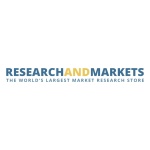Worldwide Aquaculture Industry to 2027 – Technological Advancements in the Field of Aquaculture are Driving Growth – ResearchAndMarkets.com

DUBLIN–(BUSINESS WIRE)–The “Aquaculture Market by Environment, and Fish Type: Global Opportunity Analysis and Industry Forecast, 2021-2027” report has been added to ResearchAndMarkets.com’s offering.
According to the Food and Agriculture Organization (FAO), aquaculture, also known as aqua farming, is defined as farming of aquatic organisms such as fin fishes, carps, mollusks, crustaceans, and aquatic plants. This farming procedure involves interventions in rearing process to enhance production, such as regular stocking, feeding, and protection from predators. Aquaculture farming involves 580 species that are currently farmed all over the world, representing a wealth of genetic diversity both within and among species. Aquaculture is practiced by some farmers in developing countries and by multinational companies that can hold ownership of the stock being cultivated. Eating fish is part of cultural traditions of many people and in terms of health benefits, it has an excellent nutritional profile. It is a good source of protein, fatty acids, vitamins, minerals, and essential micronutrients.
Developed countries are able to export their aquaculture fish production to other developed nations and developing countries are able to expand their exports by supplying products in developed countries without facing prohibitive customs duties (although they may face market access issues related to non-tariff measures). For some specific products, such as canned tuna, tariff rate quotas are applied, whereby a certain quantity per year can be imported at a reduced tariff. Widespread reduction of import tariffs has been a major driver for the expansion in international trade over the past 25 years. Regional trade agreements are reciprocal trade agreements establishing preferential terms of trade among two or more trading partners in the same region. They have been important drivers of global trade expansion in the past several decades and apply to a large proportion of global trade, also for fish and fish products.
The global food supply security issue, owing to increase in global population and rise in protein demand fuels growth of the market. In addition, zooplankton, being a major source of proteins, acts as another factor that propels the market growth. New technological advancements in rearing of fish and cultivation of sea plants also supplement the market growth. External drivers of change, both physical and social, affect production and consumption of food in Pacific Island countries. Among physical drivers, climate change has been recognized as a key concern and is expected to aggravate predicted shortfalls in coastal fisheries production, which, in turn, drives aquaculture production. Evolution of inland fish farming provides numerous opportunities for the market expansion. In addition, new advancements in technologies for rearing of fish and cultivation of sea plants also drive growth of the market.
The report segments the market on the basis of environment, fish type, and region. The environment segment includes marine water, fresh water, and brackish water. On the basis of fish type, the market is divided into carps, mollusks, crustaceans, mackerels, sea bream and others (pompano, snappers, groupers, salmon, milkfish, tuna, tilapia, catfish, sea bass, and a diverse group of aquatic animals that dwell in oceans as well as in freshwater). Region wise, it is analyzed across North America (the U.S., Mexico, and Canada), Europe (Russia, Norway, Iceland, and rest of Europe), Asia-Pacific (China, the Philippines, Japan, Indonesia, Vietnam, Australia, and rest of Asia-Pacific), and LAMEA (Latin America, the Middle East, and Africa).
Key Benefits
- The report provides a quantitative analysis of the current market trends, estimations, and dynamics of the market size from 2019-2027 identify the prevailing aquaculture opportunities.
- Porter’s five forces analysis highlights the potency of buyers and supplier’s tenable stakeholder’s make profit-oriented business decisions and strengthen their supplier-buyer network.
- In-depth analysis of the size and segmentation assists to determine the prevailing market opportunities.
- The major countries in each region are mapped according their revenue contribution the industry.
- The market player positioning segment facilitates benchmarking and provides a clear understanding of the present position of the market players in the aquaculture industry.
Market Dynamics
Drivers
- Expanding F&B Industry
- Rise in Fish Production to Meet Food Supply
- Changes in Lifestyle and Rise in Demand for Protein Rich Diet
- Technological Advancements in the Field of Aquaculture
- Expanding Retail Market
Restraints
- Rise in the Act of Animal Cruelty in Animal Farms and Slaughterhouses
- Adoption of Veganism
- Rise in Temperature and Water Pollution
Opportunity
- Evolution in Inland Fishing and Use of More Sustainable Technology in Aquaculture
Company Profiles
- Alpha Group Ltd
- Aquaculture Technologies Asia Limited
- Cermaq Group as (Mitsubishi Corporation)
- Cooke Aquaculture
- Leroy Seafood Group Asa (Leroy)
- Marine Harvest Asa (Marine)
- Nippon Suisan Kaisha, Ltd.
- P/F Bakkafrost (Bakkafrost)
- Tassal Group Limited (Tassal)
- Thai Union Group plc (Thai Union)
For more information about this report visit https://www.researchandmarkets.com/r/ns37ev
Contacts
ResearchAndMarkets.com
Laura Wood, Senior Press Manager
[email protected]
For E.S.T Office Hours Call 1-917-300-0470
For U.S./CAN Toll Free Call 1-800-526-8630
For GMT Office Hours Call +353-1-416-8900





